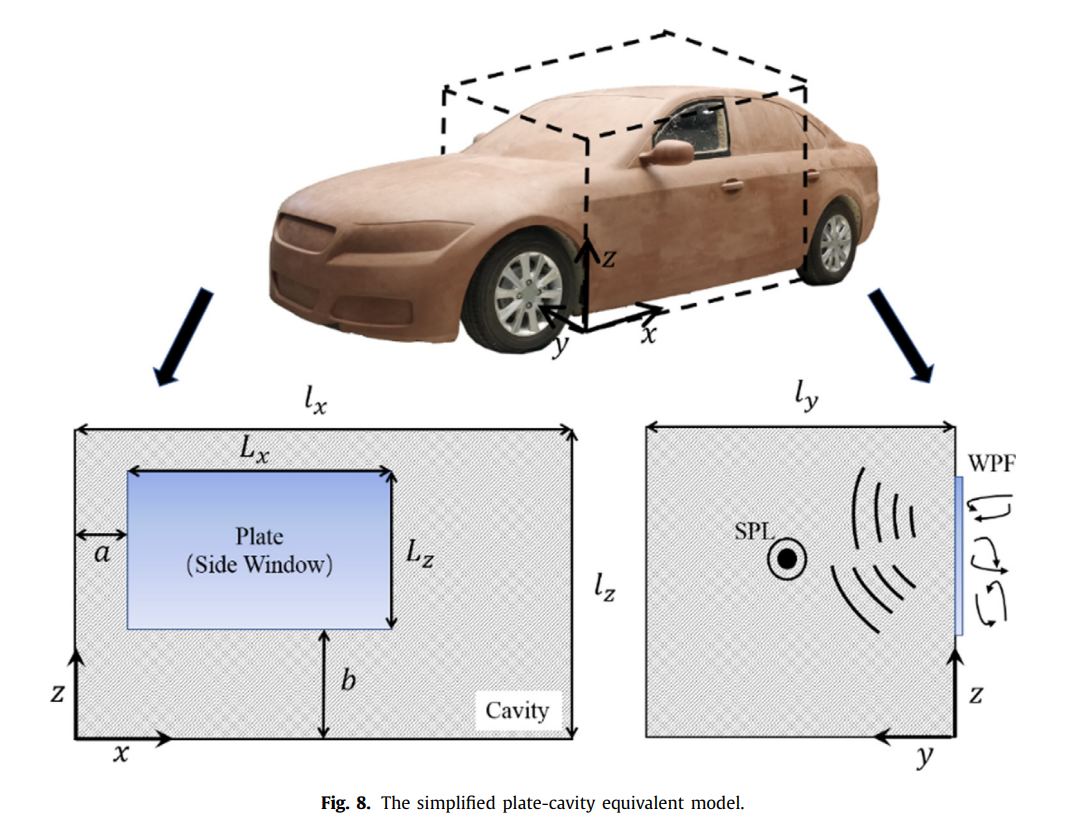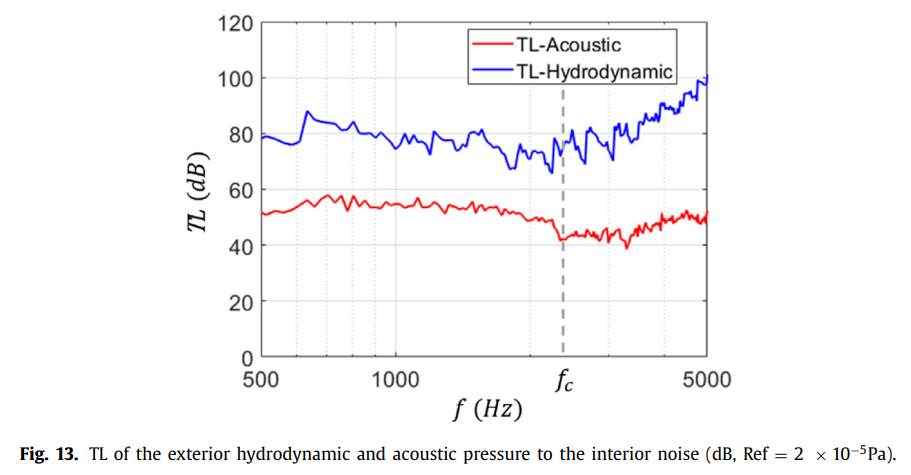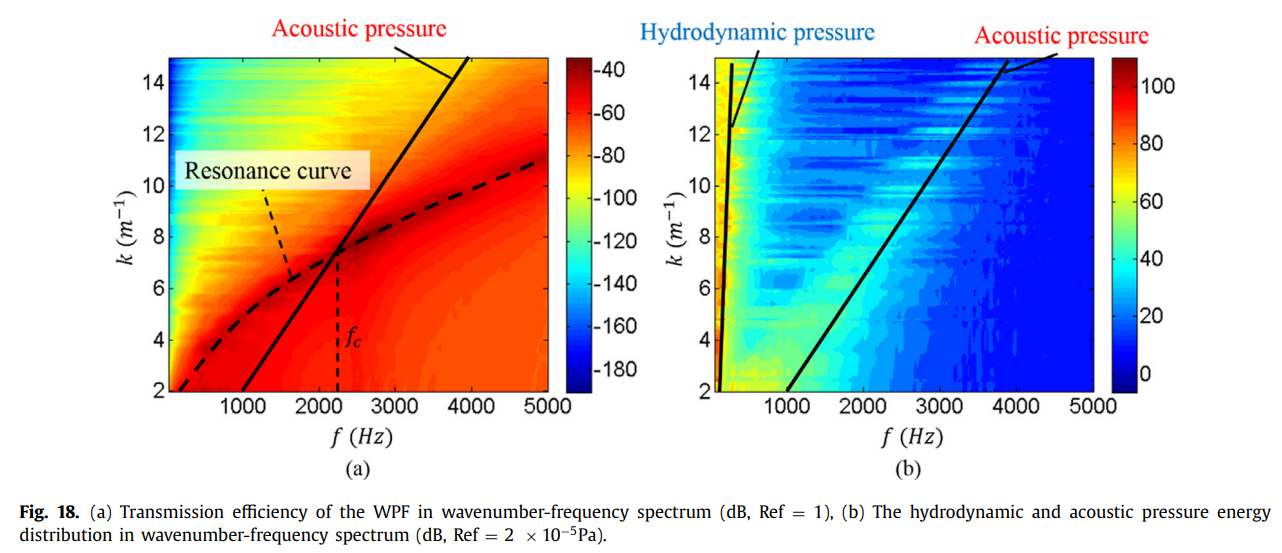
He Yinzhi*; Wan Rongxin; Liu Yongming; et al. Transmission Characteristics and Mechanism Study of Hydrodynamic and Acoustic Pressure through a Side Window of DrivAer Model Based on Modal Analytical Approach, Journal of Sound and Vibration, 2021, 501: 116058. SCI.
贺银芝、万荣欣、刘永铭等: 基于模态解析法的DrivAer模型湍流及声压通过侧窗的传递特性及机理研究. Journal of Sound and Vibration, 2021, 501: 116058. SCI.
论文摘要(英文)
Transmission characteristics and mechanism of the exterior wall pressure fluctuations (WPFs) on the side window of a DrivAer model to the interior wind noise were studied. After separation of hydrodynamic and acoustic pressure components with compressible CFD simulation and wavenumber decomposition (WND), an improved modal analytical approach was employed to calculate cabin interior noise with a simplified plate-cavity equivalent model. The simulation result was then validated through comparison with wind tunnel test. With the help of the analytical model, transmission loss (TL) of the exterior WPF to the interior noise was calculated with two sub-processes to study transmission efficiency and corresponding mechanism of the two pressure components. The result shows that hydrodynamic pressure loses much more energy than that of the acoustic pressure. The difference of transmission efficiency of the two pressure components is influenced by three main factors: “modal preference effect”, resonance effect and the coupling characteristic between modes of the side window and the cabin, especially the first two factors make the side window acting as a “low-wavenumber filter” for exterior WPF and form the primary causes for the transmission difference. Additionally, the generation of the coincidence effect was discussed from the perspective of modal analysis, indicating that it is essentially a particular resonance phenomenon, with the coincident wavenumber of excitation and structure.
论文摘要(中文)
研究了DrivAer模型侧窗外侧压力脉动(WPFs)向车内传递风噪声的特性及机理。通过可压缩 CFD仿真和波数分解 (WND) 分离湍流压力脉动和声压脉动后,采用改进的模态分析方法,通过简化的平板-声腔等效模型计算舱内噪声。通过与风洞试验对比,验证了仿真结果。借助解析模型,通过两个子过程计算了外侧WPF相对于车内噪声的传声损失(TL),以研究两个压力脉动成分的传递效率和机理。结果表明,流体压力脉动比声压脉动在传递中损失更多能量。两种压力分量的传递效率差异受三个主要因素影响:“模态偏好效应”、共振效应以及侧窗与座舱模态之间的耦合特性,尤其是前两个因素使得侧窗成为针对外部 WPF 的“低波数滤波器”,是造成传输差异的主要原因。此外,从模态分析的角度讨论了吻合效应的产生机理,表明它本质上是一种特殊的共振现象,此时激励场的波数与结构波数重合。
主要内容图片介绍:
Based on an improved modal analytical approach, transmission characteristics and mechanism of the exterior hydrodynamic and acoustic pressure on the side window of a DrivAer model to the interior wind noise were clearly interpreted.
基于改进的模态分析方法,清晰地解释了DrivAer模型侧窗外侧流体压力脉动和声压对内部风噪声的传递特性和机理。

Fig. 8. The simplified plate-cavity equivalent model
Fig. 8. 简化后的平板-声腔等效模型

Fig. 13. TL of the exterior hydrodynamic and acoustic pressure to the interior noise (dB, Ref =Pa)
Fig. 13. 侧窗外部湍流压力脉动和声压脉动向车内传递的传声损失(dB,Ref = Pa)
The different transmission efficiency of hydrodynamic and acoustic pressure is influenced by three main factors: “modal preference effect”, resonance effect and the coupling characteristic between modes of the window and the cabin, especially the first two factors make the side window acting as a “low-wavenumber filter”. From the perspective of modal analysis, the generation of the coincidence effect was discussed. It is indicated that it is essentially a particular resonance phenomenon, with the coincident wavenumber of excitation and structure.
流体压力脉动和声压的不同传递效率受三个主要因素影响:“模态偏好效应”、共振效应以及车窗与车厢模式之间的耦合特性,尤其是前两个因素使得侧窗作为“ 低波数滤波器”。 从模态分析的角度,讨论了吻合效应的产生,表明它本质上是一种特殊的共振现象,当激励与结构的波数一致时产生。

Fig. 16. Vibration energy distribution on the side window modes (a) Excited by the hydrodynamic and acoustic pressure, (b) Excited by the acoustic pressure (dB, Ref = 1mm)
Fig. 16. 侧窗振动能量在侧窗各阶模态下的分布:(a)由湍流压力脉动和声压脉动共同激励;(b)单独由声压脉动激励(dB,Ref = 1mm)

Fig.18. (a) Transmission efficiency of the WPF in wavenumber-frequency spectrum (dB, Ref = 1), (b) The hydrodynamic and acoustic pressure energy distribution in wavenumber-frequency spectrum (dB, Ref = Pa)
Fig.18. (a)波数-频率域下车外WPF向车内的能量传递效率(dB,Ref = 1),(b)波数-频率域下的湍流压力脉动和声压脉动能量分布(dB,Ref = Pa)